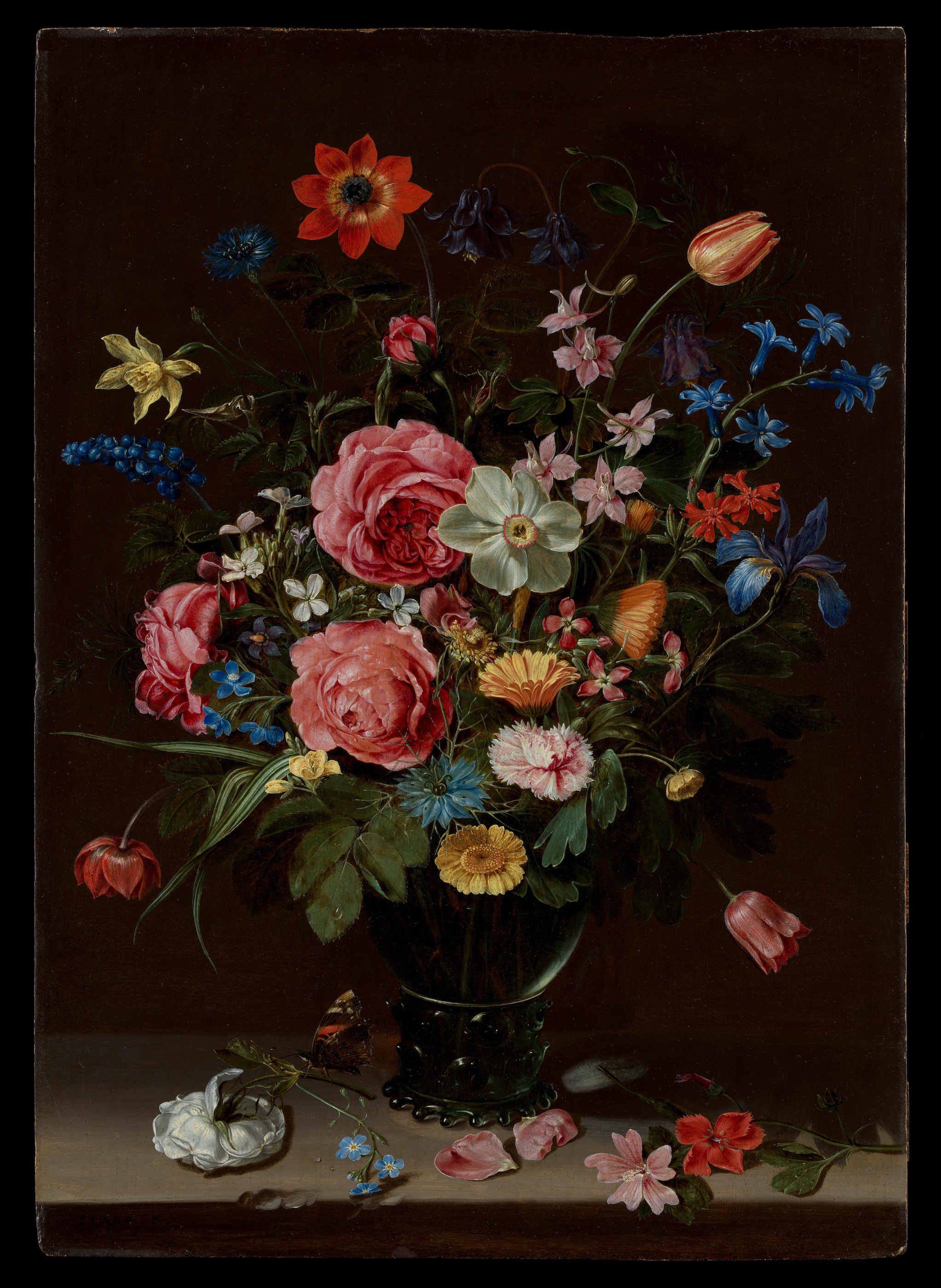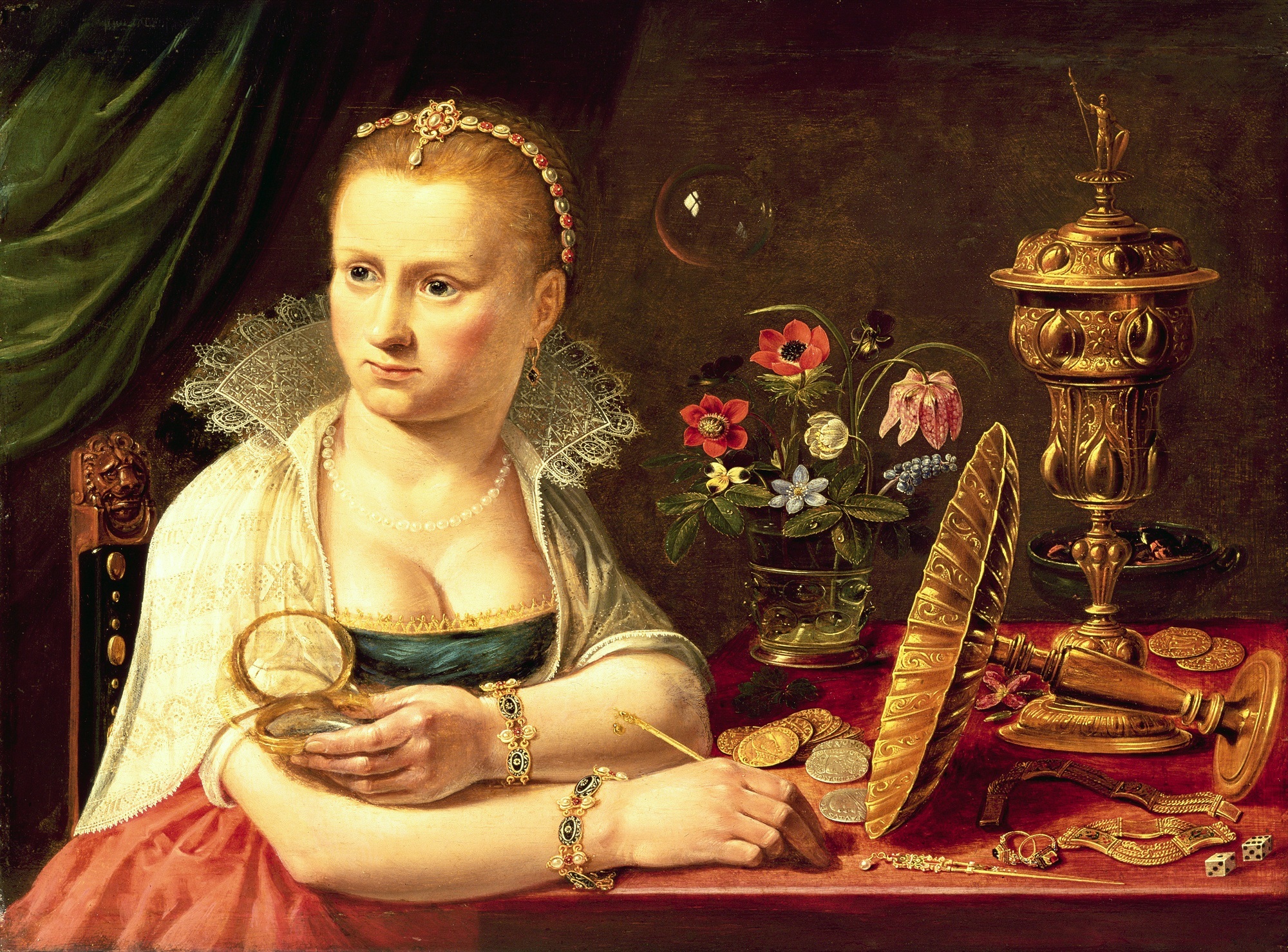Clara Peeters was a founding figure in the history of European still life, a genre that attracted many women artists who did not have the opportunity to study nude models. In this ambitious composition, Peeters paid close attention to naturalistic details like dewdrops, insect bites, and drooping tulips that hint at transience and decay. At the same time, she asserted her own achievement by inscribing her signature in the stone ledge, juxtaposed with a fallen sprig of forget-me-nots. The crisp edges and acute observation that characterize her work reveal the close link between floral painting and botanical illustration during the Scientific Revolution.
Clara Peeters was one of the few women artists working professionally in 17th-century Europe, despite restrictions on women's access to artistic training and membership in guilds. If you would like to learn more about such artists, please check out our Women Artists 50 Postcards Set.
P.S. Clara Peeters was one of the most important women artists of Dutch Golden Age—yes, you see right, there were plenty of them!


 Clara Peeters
Clara Peeters